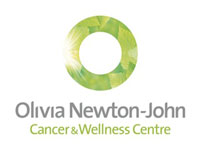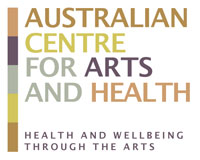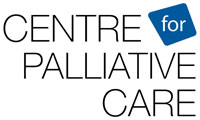The Arts and Community Health
Liss Gabb
Liss is an artist, creative producer, curator and educator. Over the past 20 years Liss has developed a socially engaged practice that is based on working in partnership with vulnerable communities. Liss provides the artistic leadership for Cohealth Arts Generator, an innovative, participatory arts space located in Footscray in Melbourne's West. A division of Cohealth, the largest community health organisation in Victoria, Cohealth Arts Generator aims to work in partnership with individuals and communities to unlock creative potential, increase agency and build connections through participatory arts practice.
Liss is a regular contributor to national and international conferences in the arts and in the health sectors. In 2012 Liss presented at the 7th International Arts In Society Conference in Liverpool UK. Liss' work utilises photographic, projected image, text and video forms. She has produced collaborative work in public space for Melbourne Festival, Big West Festival and Fringe Festival. Liss is currently undertaking her Masters of Arts (Art in Public Space) at RMIT.
The Art of Empathy
cohealth Arts Generator is a division of leading health provider cohealth. Newly formed cohealth brings together three community health centres serving vulnerable communities in northern, western and inner suburbs of Melbourne. cohealth Arts Generator works in partnership with marginalised individuals and communities who experience limited access to arts and cultural opportunities. Through participatory arts practice cohealth Arts Generator aims to improve health and wellbeing, and increase agency by unlocking creative potential and building connections to the broader community.
In this presentation cohealth Arts Generator's Coordinator, Liss Gabb will present three innovative case studies that support the development of empathy in the art-maker and in the art-viewer.
Benchmark
Benchmark is a unique participatory arts and health program for young South Sudanese men in the Western Region of Melbourne. Benchmark consists of a program of cultural outreach in public space and intensive one-on-one arts projects with artist participants and established artist facilitators.
The young men involved in the Benchmark program carry the burden of troubled pasts having come to Australia from war-torn countries as children and teenagers. Many are homeless, have chronic alcohol problems, have been rejected by their families and are ostracized from the broader community.
The art-making in Benchmark provides relief from boredom, a vehicle for the expression of opinions and frustrations, as well as an antidote to the failure of our system to meet the needs of this vulnerable group. Most importantly the program has become a bridge to rebuilding connections to the young men's families and communities.
Scattered Tribes
Even in very recent years, Australian Aboriginal people have found out for the first time that they are members of the Stolen Generation. Adults in their sixties are embarking on extraordinary journeys to find their families, their culture, and their place. This journey is undertaken by many people who have experienced extreme mental and physical abuse in childhood that has led into adult lives deeply affected by mental illness and substance abuse.
Scattered Tribes uses a process of creative collaboration between Aboriginal Elders and professional artists facilitators that supports the development of high quality contemporary artistic outcomes that speak directly to the broader community, while supporting individual and family healing. This project demonstrates a considered curatorial approach to the telling of stories that are born from a shameful chapter of governmental policy in Australian history.
Sisters and Brothers
Now in its third year, Sisters and Brothers is an innovative arts program that is focused on reducing race-based discrimination through collaborative song writing.
At the heart of the Sisters and Brothers project is the power of music and mass singing. A team of experienced artists, community cultural development practitioners, and young culturally and linguistically diverse artists engage primary school children age 8-12 years in a process combines the use of bystander intervention techniques with collaborative song writing, body percussion and musical performance, resulting in original musical tracks that are both recorded and performed at a series of cultural and community events.
To date the project has engaged over 1000 children and their families, and has produced some powerful and compelling results.
Back










